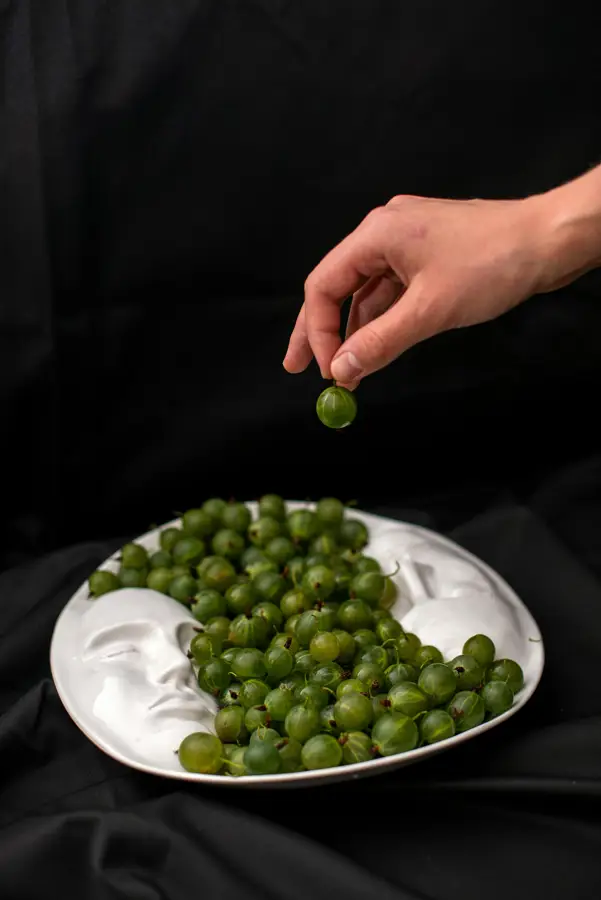The irresistible aroma of savory filling encased in flaky, golden pastry – that’s the promise of a perfect Spanish empanada. These handheld pastries are far more than just a delicious snack; they represent a significant piece of culinary history and cultural heritage spanning centuries. While often associated with Latin America, particularly Argentina, the empanada’s origins actually lie in Spain, evolving from the ancient practice of enclosing meat and other ingredients in dough. The word empanada itself derives from the verb empanar, meaning to bread or to wrap in bread, highlighting the fundamental technique at the heart of this dish.
Galicia, a northwestern region of Spain, is widely considered the birthplace of the modern empanada. Here, the tradition of filling pastries with various ingredients, often seafood given Galicia’s coastal location, has been passed down through generations. These early empanadas were simpler in their construction, perhaps reflecting the readily available ingredients of the time. However, the basic concept – a savory filling encased in dough, baked to perfection – remained consistent. The recipe then spread across Spain, adapting to regional tastes and the availability of local ingredients. In some regions, meat became the dominant filling, while others embraced vegetarian options, showcasing the versatility of this humble pastry.
The empanada’s journey across the Atlantic with Spanish explorers and colonizers is well documented. It quickly gained popularity in the Americas, undergoing regional transformations and becoming a staple food in countries like Argentina, where it’s almost a national symbol. In fact, Argentina consumes an estimated 500 million empanadas annually, a staggering statistic that underscores its cultural importance. The variations are astounding: from the classic beef empanada of Argentina to the spicy chicken empanadas of Mexico, each region boasts its unique twist on this timeless recipe. This culinary diffusion highlights the power of food to transcend borders and become a unifying element in diverse cultures.
Beyond its culinary significance, the empanada also holds strong social and cultural meaning. It’s a ubiquitous food served at celebrations, family gatherings, and everyday meals. They are often sold by street vendors, representing an accessible and affordable option for many. The simple act of sharing an empanada fosters a sense of community and connection, making it more than just food; it’s an experience, a symbol of shared history and a testament to the enduring appeal of a truly classic dish. The perfect Spanish empanada, therefore, is not merely a delicious treat, but a journey through time, a reflection of culinary history, and a celebration of cultural exchange.
Ingredients and Measurements
Creating the perfect Spanish empanada hinges on using high-quality ingredients and precise measurements. While you can adapt the recipe to your taste, sticking closely to these quantities will ensure the best results in terms of texture and flavor. We’ve broken down the ingredients into three main sections: the dough, the filling, and the optional egg wash.
For the Empanada Dough:
Flour: 3 cups (375g) all-purpose flour. Using all-purpose flour provides the perfect balance of structure and tenderness. Avoid using bread flour, as it will result in a tough crust. If you prefer a richer flavor, you can substitute up to 1/2 cup with 00 flour (Italian type 00 flour).
Shortening or Lard: 1 cup (2 sticks, 227g) cold, unsalted shortening or lard. Lard imparts a richer, more traditional flavor, but shortening works well as a substitute. Ensure the fat is very cold – this is crucial for a flaky crust. Cut the fat into small cubes before adding it to the flour to ensure even distribution.
Salt: 1 teaspoon (5g) fine sea salt. Salt enhances the flavors of the dough and the filling. Don’t skimp on this ingredient!
Ice Water: Approximately 1/2 cup (120ml) ice water. Add the ice water gradually, mixing with a fork until the dough just comes together. Don’t overmix, as this will develop the gluten and result in a tough crust. The amount of water needed may vary slightly depending on the humidity and type of flour used.
For the Savory Filling:
Ground Beef: 1 lb (450g) lean ground beef. You can substitute with ground lamb or a mix of beef and pork for a different flavor profile. Ensure the meat is well-drained after browning to prevent a soggy empanada.
Onion: 1 large yellow onion (150g), finely chopped. The onion adds sweetness and depth of flavor to the filling. You can also add a finely chopped clove of garlic for extra pungency.
Bell Pepper: 1 medium green bell pepper (100g), finely chopped. Adds a touch of sweetness and color to the filling. Feel free to experiment with other bell pepper colors.
Tomatoes: 1 (14.5 oz) can diced tomatoes, undrained. The juice from the tomatoes helps create a moist filling. Consider using high-quality canned tomatoes for the best flavor.
Seasoning: 1 teaspoon ground cumin, 1/2 teaspoon smoked paprika, 1/4 teaspoon cayenne pepper (optional), salt and black pepper to taste. These spices create a delicious and authentic Spanish flavor. Adjust the amount of cayenne pepper based on your spice preference.
Olives: 1/2 cup (70g) pitted Manzanilla olives, sliced. These olives add a salty, briny element to the filling. Other olives can be substituted, but Manzanilla olives are considered traditional.
For the Egg Wash (Optional):
Egg: 1 large egg, lightly beaten. This creates a glossy finish and helps the empanadas brown nicely. Brush the egg wash onto the empanadas before baking. You can add a tablespoon of milk or water to the egg wash for a thinner consistency.
Dough Preparation
Creating the perfect empanada dough is crucial for achieving that signature flaky, tender crust. This recipe yields enough dough for approximately 12 medium-sized empanadas. We’ll be using a simple, yet effective, method that prioritizes both ease and quality.
Ingredients:
- 3 cups (375g) all-purpose flour, plus extra for dusting
- 1 teaspoon salt
- 1 cup (2 sticks) (227g) unsalted butter, very cold and cut into small cubes
- ½ cup (120ml) ice water
- 1 tablespoon white vinegar (optional, but adds tenderness)
Instructions:
Step 1: Whisk Dry Ingredients: In a large bowl, whisk together the flour and salt. This ensures even distribution of salt throughout the dough, preventing pockets of intense saltiness.
Step 2: Cut in the Butter: Add the very cold, cubed butter to the flour mixture. Using a pastry blender or your fingertips (working quickly to prevent the butter from melting), cut the butter into the flour until the mixture resembles coarse crumbs. Avoid overmixing at this stage; pea-sized pieces of butter are ideal. These butter pieces create steam during baking, resulting in flaky layers.
Step 3: Incorporate the Liquids: In a separate bowl, whisk together the ice water and vinegar (if using). Gradually add the liquid to the flour-butter mixture, mixing gently with a fork until the dough just comes together. Do not overmix. A slightly shaggy dough is perfectly fine.
Step 4: Form the Dough: Turn the dough out onto a lightly floured surface. Gently bring the dough together into a ball. Avoid kneading, as this will develop the gluten and result in a tough crust. Instead, simply shape it into a flat disc.
Step 5: Rest the Dough: Wrap the dough disc in plastic wrap and refrigerate for at least 30 minutes. This allows the gluten to relax and the flavors to meld. Refrigerating for longer, up to 2 hours, is even better, resulting in an even more manageable and less sticky dough.
Step 6: Roll and Cut: After resting, roll out the dough on a lightly floured surface to about ⅛ inch thickness. Use a round cookie cutter or a knife to cut out circles for your empanadas. For perfectly uniform empanadas, use a template. You can easily make one from cardboard.
Professional Recommendations:
- Use very cold ingredients: This is paramount for achieving a flaky crust. Chill your butter, flour, and water before starting.
- Work quickly: The warmer the butter gets, the tougher the dough will be. Minimize handling time.
- Don’t overmix: Overmixing develops gluten, leading to a tough crust. Aim for a slightly shaggy dough.
- Rest the dough: Allowing the dough to rest helps relax the gluten and improves the texture.
Following these steps will ensure you have a delicious, flaky crust that perfectly complements your empanada filling. Enjoy!
Filling Preparation
The heart of a perfect Spanish empanada lies in its flavorful filling. This section details the preparation of a classic beef filling, but feel free to adapt it to your preferences – chicken, spinach and cheese, or even seafood all work wonderfully. Consistency is key; you want a filling that’s moist but not soupy, allowing for easy enclosure within the pastry.
Ingredients (for approximately 8 empanadas):
- 1 lb ground beef (80/20 blend recommended)
- 1 large onion, finely chopped
- 2 cloves garlic, minced
- 1 red bell pepper, finely chopped
- 1 (14.5 ounce) can diced tomatoes, undrained
- 1/2 cup beef broth
- 1 teaspoon ground cumin
- 1/2 teaspoon smoked paprika
- 1/4 teaspoon cayenne pepper (optional, for a touch of heat)
- 1/4 cup chopped fresh parsley
- 2 tablespoons olive oil
- Salt and freshly ground black pepper to taste
Instructions:
Begin by heating the olive oil in a large skillet over medium-high heat. Add the ground beef and cook, breaking it up with a spoon, until browned. Drain off any excess grease. This step is crucial for preventing a greasy filling.
Add the chopped onion and bell pepper to the skillet and cook until softened, about 5-7 minutes. Stir in the minced garlic and cook for another minute until fragrant. Don’t overcook the vegetables, as they will continue to soften during the baking process.
Now, stir in the diced tomatoes (undrained), beef broth, cumin, smoked paprika, and cayenne pepper (if using). Bring the mixture to a simmer, then reduce the heat to low, cover, and cook for 15-20 minutes, or until the liquid has reduced slightly and the flavors have melded. Season generously with salt and pepper throughout the cooking process, tasting and adjusting as needed.
Once the filling has thickened to your liking, remove it from the heat and stir in the chopped fresh parsley. Allow the filling to cool completely before using it to fill your empanada dough. This prevents the pastry from becoming soggy during baking.
Professional Tip: For a richer, deeper flavor, consider browning the beef in stages. First brown the beef, then remove it from the pan. Next, sauté the onions and peppers until softened, then return the beef to the skillet along with the remaining ingredients. This allows the vegetables and beef to develop their own distinct flavors before being combined.
Important Note: The cooking time may vary depending on the type of ground beef and the size of your skillet. Always ensure the filling is cooked through before proceeding. The filling should be flavorful and well-seasoned, providing a satisfying contrast to the flaky pastry.
Assembly of Empanadas
With your flavorful filling prepared and your dough ready to roll, it’s time to assemble your perfect Spanish empanadas. This stage requires precision and a gentle touch to ensure beautifully sealed and evenly cooked pastries. We’ll be aiming for approximately 4-inch diameter empanadas, yielding about 12-15 empanadas depending on your dough yield.
Prepare your work surface: Lightly dust a clean, flat surface with flour to prevent sticking. This will make rolling and handling the dough much easier. Keep a bowl of extra flour nearby for any unexpected stickiness.
Rolling the dough: Divide your empanada dough into 12-15 equal portions (approximately 40-50g each). Roll each portion into a 6-inch circle using a rolling pin. Avoid rolling too thin, as this can lead to breakage during baking and a less satisfying texture. Aim for a thickness of about 1/8 inch.
Filling the empanadas: Place approximately 2-3 tablespoons of your prepared filling in the center of each dough circle. Don’t overfill! Overfilled empanadas are prone to bursting during baking. Leave about a 1-inch border around the filling.
Sealing the empanadas: This is a crucial step for preventing leaks. Using your fingers or a fork, carefully fold the dough circle in half to form a half-moon shape, firmly pressing the edges together to create a tight seal. Crimp the edges using your fingers or a fork to create a decorative and secure seal. You can use a fork to create a decorative pattern along the edges for a professional finish. Alternatively, you can use a pastry wheel to create a neat, even edge.
Optional: Egg wash for a golden crust: For an extra golden and glossy finish, brush the top of each empanada with a beaten egg wash (1 egg lightly beaten with 1 tablespoon of water). This enhances the visual appeal and adds a subtle richness to the crust.
Placement on baking sheet: Arrange the assembled empanadas on a baking sheet lined with parchment paper, leaving some space between each empanada to allow for expansion during baking. Avoid overcrowding the baking sheet, which can impede even cooking.
Baking preparation: Preheat your oven to 400°F (200°C). Once preheated, carefully place the baking sheet with the empanadas into the oven. Bake for approximately 20-25 minutes, or until the crust is golden brown and the filling is thoroughly heated. Baking time may vary depending on your oven and the thickness of the dough. Keep an eye on them to prevent burning.
Cooling and serving: Once baked, remove the empanadas from the oven and let them cool slightly on a wire rack before serving. This allows the filling to set and prevents burning your mouth. Serve warm and enjoy your homemade Spanish empanadas!
Troubleshooting: If your empanadas burst during baking, it’s likely due to overfilling or insufficient sealing. Next time, use less filling and ensure a tighter crimp on the edges. If the crust is too pale, increase the baking time slightly. If the crust is burning too quickly, reduce the oven temperature slightly.
Baking/Frying Techniques for Perfect Spanish Empanadas
Achieving perfectly cooked Spanish empanadas hinges on mastering the chosen cooking technique – baking or frying. Both methods offer unique textural results, and understanding the nuances of each is crucial for success. We’ll delve into the specifics of each, providing practical advice for achieving optimal results.
Baking Empanadas: Baking offers a healthier, less greasy alternative to frying, resulting in a crispier crust and a less saturated filling. For best results, use a good quality, all-purpose flour for your dough. Preheat your oven to 200°C (400°F) for approximately 15 minutes before placing the empanadas inside. This ensures even heat distribution and prevents sticking. Arrange the empanadas on a baking sheet lined with parchment paper, leaving a small space between each to allow for even browning and expansion during baking.
Baking Time and Temperature: Baking time will vary depending on the size and thickness of your empanadas. For medium-sized empanadas (approximately 4-5 inches in diameter), expect a baking time of 20-25 minutes. Check for doneness by lightly pressing the top crust; it should sound hollow. If the crust is browning too quickly before the filling is cooked through, reduce oven temperature to 180°C (350°F) and continue baking. A food thermometer inserted into the center of the filling should register at least 74°C (165°F) to ensure it’s thoroughly cooked.
Frying Empanadas: Frying produces empanadas with a wonderfully golden-brown, crispy crust and a slightly softer, more tender filling. This method requires a deep fryer or a large, heavy-bottomed pot filled with at least 2 inches of oil. Use a high-smoke-point oil such as vegetable, canola, or sunflower oil. Overheating the oil can lead to burning and a less desirable flavor. Maintain a consistent oil temperature of 175°C (350°F) throughout the frying process. Use a thermometer to monitor the temperature accurately.
Frying Technique and Time: Carefully lower the empanadas into the hot oil, ensuring not to overcrowd the pot. Overcrowding will lower the oil temperature and result in unevenly cooked empanadas. Fry in batches, ensuring that each empanada is fully submerged. Fry for approximately 3-4 minutes per side, or until golden brown and crispy. Use tongs to carefully remove the empanadas from the oil and place them on a wire rack lined with paper towels to drain excess oil. Allow the empanadas to cool slightly before serving.
Professional Recommendations: Regardless of your chosen method, ensure your empanada dough is properly sealed to prevent leakage during cooking. Crimp the edges firmly using a fork or your fingers. For extra crispiness, you can brush the top of the baked or fried empanadas with a beaten egg before cooking. This will add a beautiful sheen and enhance the texture. Finally, allow the empanadas to rest for a few minutes after cooking before serving; this allows the filling to set and the crust to cool slightly, improving the overall eating experience.
Experiment with both baking and frying to discover your preferred method and enjoy the delicious results of your perfectly cooked Spanish empanadas!
Glazing or Brushing (if applicable)
While not strictly traditional, glazing or brushing your empanadas before baking can significantly enhance their appearance and texture, adding a beautiful sheen and sometimes a subtle flavor boost. This step is entirely optional, but highly recommended for achieving truly professional-looking results.
The most common glazing option for empanadas is an egg wash. This simple technique provides a glossy finish and helps the crust achieve a richer golden-brown color during baking. To make an egg wash, whisk together one large egg yolk with one tablespoon of milk or water. The addition of milk or water prevents the wash from becoming too thick and ensures even coverage. Avoid using the entire egg, as the white can sometimes result in a less appealing finish.
For a richer flavor and deeper color, you can incorporate herbs or spices into your egg wash. A teaspoon of finely chopped fresh rosemary or thyme, or a pinch of paprika, can add a delightful aroma and visual appeal. Remember to whisk these ingredients thoroughly into the egg yolk mixture for even distribution. Experiment with different herbs and spices to find your perfect combination.
Alternatively, you can use a milk wash for a softer, less glossy finish. Simply brush the empanadas with two tablespoons of whole milk using a pastry brush. This method is gentler on the pastry and produces a subtly different texture. Whole milk provides a richer flavor compared to skim milk.
Another option, offering both flavor and visual appeal, is a simple glaze made with olive oil. Brush the empanadas generously with one tablespoon of high-quality extra virgin olive oil. This will create a glistening surface and impart a subtle, savory flavor. Ensure the oil is at room temperature for even application.
Regardless of the glazing method you choose, the application is crucial. Using a pastry brush, gently brush the glaze evenly over the entire surface of each empanada, paying close attention to the edges and ensuring complete coverage. Avoid overloading the brush, as this can lead to dripping and uneven baking.
The timing of the glazing is also important. Apply the glaze just before baking. This ensures it has time to set slightly and create that attractive golden-brown finish without running off during cooking. Glazing too early can cause the glaze to dry out and crack.
Finally, remember that less is often more. A thin, even coat is far more effective than a thick, uneven layer. Practice makes perfect, so don’t be afraid to experiment and find the glazing technique that best suits your preferences and produces the most visually appealing and delicious empanadas.
Perfect Spanish Empanadas: Recommendations
To fully enjoy your Perfect Spanish Empanadas, we recommend the following:
Serving Suggestions: For the best experience, serve your empanadas warm. You can achieve this by reheating them in a preheated oven at 350°F (175°C) for about 8-10 minutes, or until heated through. Alternatively, you can microwave them for 1-2 minutes, but be mindful not to overcook them, which can make the pastry soggy. For a truly authentic touch, serve them straight from the oven with a dusting of powdered sugar or a sprinkle of freshly chopped parsley. Consider offering a small dipping bowl of your favorite aioli or chimichurri sauce alongside for an extra burst of flavor.
Storage Conditions: For optimal freshness, consume your empanadas within 2 days of baking. Store leftover empanadas in an airtight container at room temperature. Do not refrigerate, as this can make the pastry become stale and tough. If you need to store them for longer, you can freeze unbaked empanadas before cooking. Wrap them individually in plastic wrap and then place them in a freezer-safe bag. They will keep frozen for up to 3 months. To reheat frozen empanadas, allow them to thaw completely before baking as instructed above.
Complementary Dishes: The versatility of Spanish empanadas makes them a perfect addition to various meals. They can be served as a standalone appetizer or snack, or paired with a variety of main courses. For a lighter meal, consider serving your empanadas with a simple green salad dressed with a light vinaigrette. A refreshing gazpacho or a vibrant Spanish tortilla would also complement the rich flavors of the empanadas beautifully. For a more substantial meal, pair them with a hearty stew such as cocido madrileño or fabada asturiana. The savory flavors of the empanadas will contrast nicely with the richness of these stews.
Nutritional Information (per empanada, approximate values): These values will vary depending on the specific ingredients used. This is an estimate for a medium-sized empanada with a typical filling:
- Calories: Approximately 350-400
- Fat: 18-22g
- Saturated Fat: 8-10g
- Cholesterol: 40-50mg
- Sodium: 300-400mg
- Carbohydrates: 40-50g
- Fiber: 2-4g
- Sugars: 5-7g
- Protein: 10-12g
Important Note: These nutritional values are estimates and may vary depending on the specific ingredients and portion sizes used. For a more accurate nutritional analysis, consult a nutritionist or use a nutrition calculator with your exact recipe details. Enjoy your delicious and perfectly crafted Spanish Empanadas!





